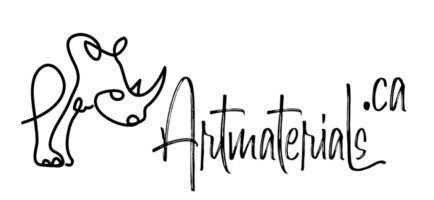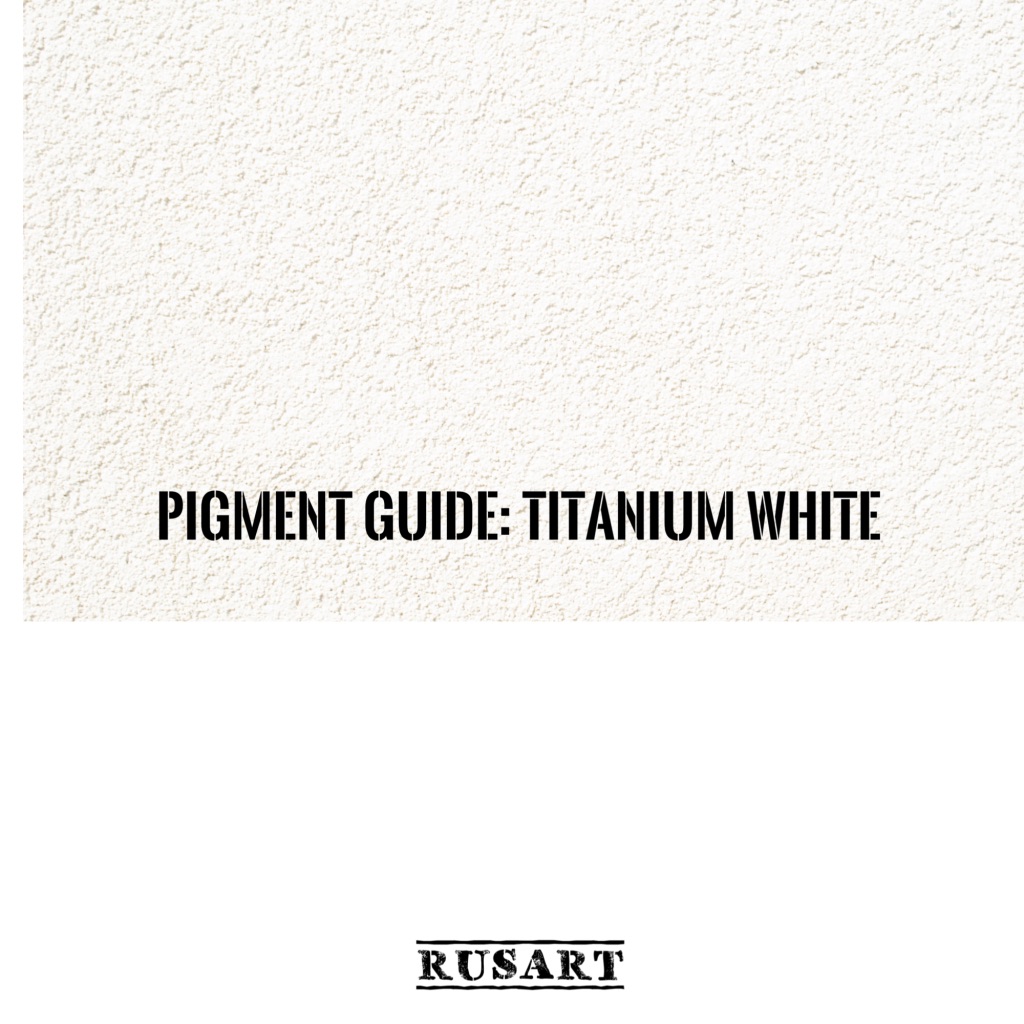Let’s take a closer look at pigments that we’re using and what properties they have and how they affect your paintings.
Colour Index: PW6
Colour Constitution Number: CI 77891
Food colour index: E171
Titanium White As Pigment
Titanium white is one of the most used colours in acrylic and oil as we use it for mixing colours, as is and as a colour extender for some colours. The pigment itself looks like a brilliant white powder that due to its heavy weight and other characteristics reminds extra fine feta cheese by appearance.
Chemically speaking, it’s just titanium dioxide (TiO2). Mixed with oil or acrylic gives pure opaque white colour with slightly cold undertone. Titanium dioxide has remarkable optical properties, with a very high refractive index close to that of diamond.
White colour is one of the most essential colours in oil and acrylic painting as artists use it a lot for mixing most of the time. An average painting contains over 60% of white, that’s why the right white colour choice is very important.
Titanium White History
Titanium white is quite new type of pigment, compared to many other historical colours, like ochres or umbers. It replaced most other kinds of white only in 1916, when became part of mass production.
Thanks to titanium white “discovery” oil painting moved from “toxic” medium to a safe one. Before titanium white was discovered artists widely used lead white that caused mental health and body disease, including cancer. Lead white settles in bones and accumulates with the time,. However, this fact helped historians find Caravaggio’s remains.
Just reminding you a short story of this great artist, who influenced Velazquez, Rembrandt and other famous artists and masters. Entered Rome in his 18-19, he apprenticed some artists, changing them quite fast, learning new things. Sometimes in 7-8 years he started his own career. With a good luck and great talent, Caravaggio worked for some of the most important patrons of the day, including Marquis Vincenzo Giustiniani, Cardinal Scipione Borghese and the banker Ottavio Costa. They commissioned a lot paintings and promoted Caravaggio as an artist.
How all these related to lead white? Being a genius artist, Caravaggio had a very unstable temper. Some researchers relate this to lead white exposure. So, after many smaller violent incidents where Caravaggio was involved, it happened that he killed a man during a street fight. He got arrested and as punishment he had leave Rome for good.
 Caravaggio moved from one place to another across Italy, begging pardon and a chance to return to Rome. Eventually, he got granted this right in exchange of all the paintings he ever done. A deal is a deal. But then for some reason (was it just a bad luck accident or a planned action – nobody knows), a ship with all his paintings left to Rome before Caravaggio boarded. So he got stuck in Port’Ercole. After that moment his life and death was a mystery. And here lead white helped find Caravaggio’s body. In 2010 body remains were identified as Caravaggio’s based on time, locale and lead concentration in bones.
Caravaggio moved from one place to another across Italy, begging pardon and a chance to return to Rome. Eventually, he got granted this right in exchange of all the paintings he ever done. A deal is a deal. But then for some reason (was it just a bad luck accident or a planned action – nobody knows), a ship with all his paintings left to Rome before Caravaggio boarded. So he got stuck in Port’Ercole. After that moment his life and death was a mystery. And here lead white helped find Caravaggio’s body. In 2010 body remains were identified as Caravaggio’s based on time, locale and lead concentration in bones.
And now, back to titanium white – it was such a relief for painters when a better and safer white was discovered. In oils titanium white is pretty stubborn, when you try to make paint from it. It forms very tacky and heavy clamps that not easy to bring to a smooth paste consistency. That’s why manufacturers often mix titanium white with zinc white or some fillers. And here another story begins…
Titanium White Additives
There are no legal requirements to indicate the full list of ingredients on a label. That’s why titanium white can have many other filling agents inside that may even make a tube feel heavier. So, Titanium white may include:
- PW3 Basic Lead Sulphate White
- PW4 Zinc Oxide White
- PW7 Zinc Sulphide White
- PW10 Barium Carbonate
- PW18 Marble Dust or a lower grade chalk composition
- PW19 Kaolin
- PW21 Barium Sulfate
Titanium White Manufacturing and Toxicity
What about toxicity, titanium white as is in paints is non-toxic. Its stability caused a very wide range of use beyond art materials. Only 28% of titanium dioxide is used for paints, 10% used for plastic, and about 6% for bleaching paper. The rest 56% belong to other industries, such as food, sun screens, other cosmetics (toothpastes) and other. Ingested, TiO2 has been identified as possibly carcinogenic, but this doesn’t stop manufacturers from using it in food.
Where titanium dioxide is coming from? It’s extracted and processed from natural minerals, either ilmenite, rutile or titanium slag. Titanium pigment is extracted by using either sulphuric acid or chlorine. The rutile contains up to 95% of TiO2, while ilmenite has only 45-60%.
What about the main manufacturers, here market belongs to China. About 2.3 million metric tonnes a year is produced there. That also explains why Chinese paints go much cheaper than ones made in other countries. The second place belongs to South Africa with about 1 million metric tonnes produced. Canada takes the fourth place here (680 thousands) and the USA produces just 100 thousands metric tonnes a year.
Titanium White Properties
And now, finally, practical use. Titanium white is opaque, which is very beneficial when you’re working with light tints or when mixing colours that require great coverage. Some manufactures add titanium white to yellow colours to increase their coverage properties, as well as to many other mixes.
Titanium white also makes wonderful greys and many other tints. Lightfastness is excellent.
Drying time in oil depends on many factors, but generally speaking it dries moderate slowly. Titanium White works well with most oil mediums, containing gums, petroleum products or turpentines. The dry film is thick and flexible, without tendency to cracking.
(c) RUSART

























